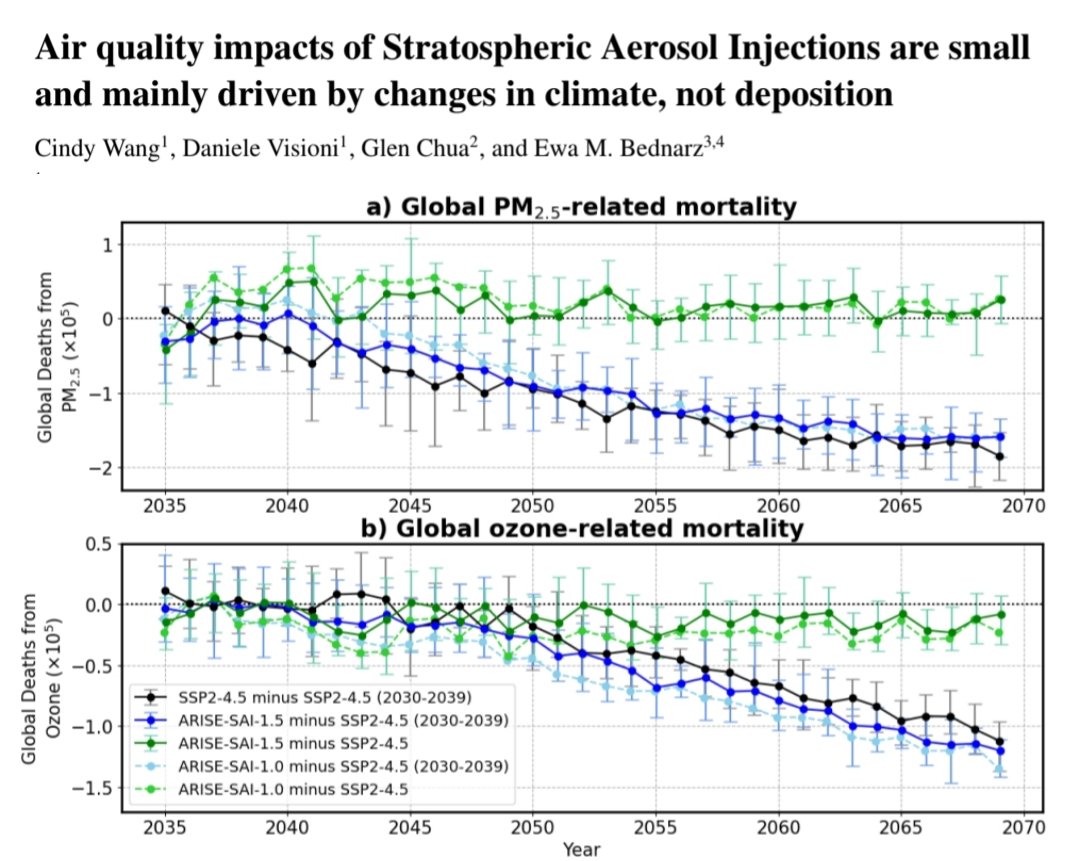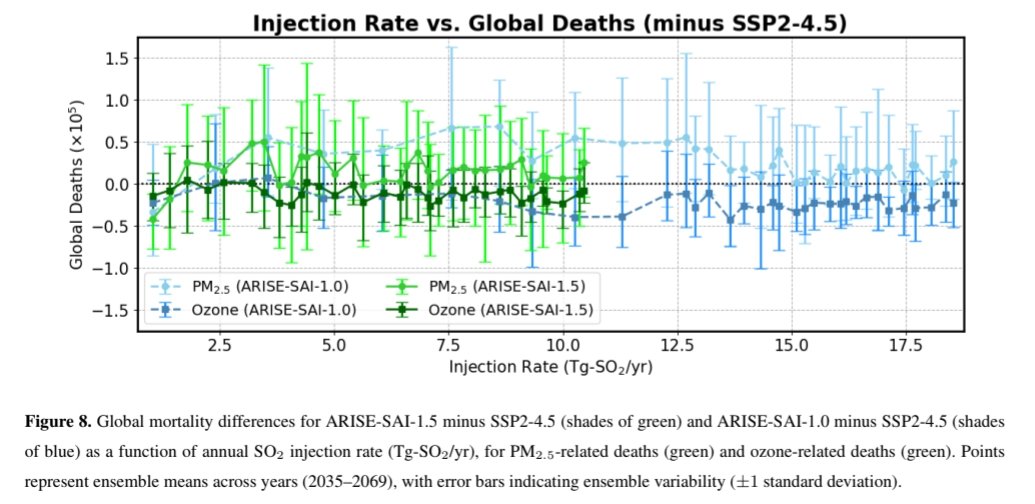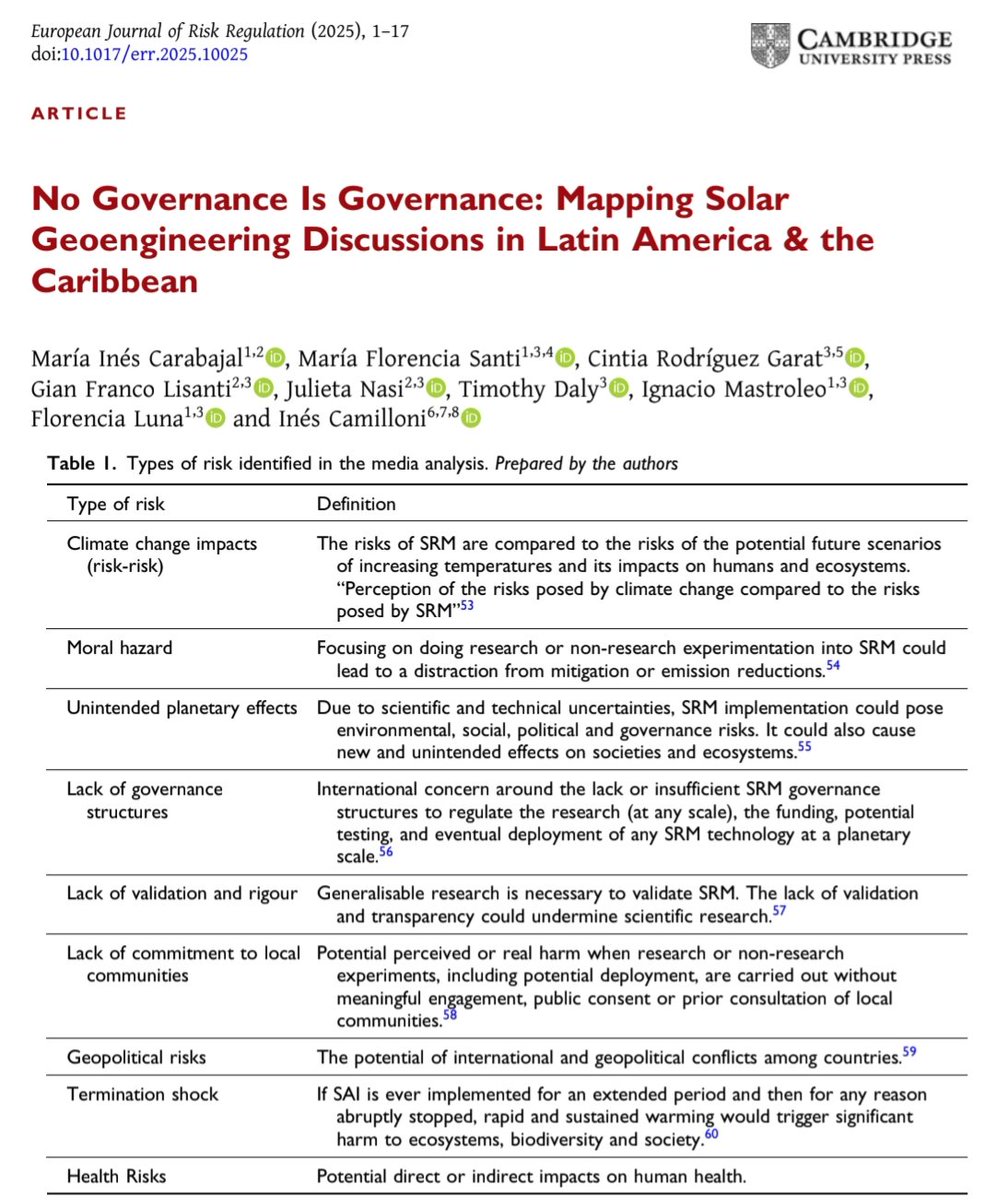🚨How does #SolarGeoengineering affect air pollution & public health?
New study using a cutting-edge Earth system model shows that #SAI has only modest effects on PM₂.₅ & ozone-related mortality & these impacts are mostly due to climate shifts, not aerosol deposition.🧵1/8
New study using a cutting-edge Earth system model shows that #SAI has only modest effects on PM₂.₅ & ozone-related mortality & these impacts are mostly due to climate shifts, not aerosol deposition.🧵1/8

2/ Using CESM2-WACCM6 simulations across three scenarios (SSP2-4.5 baseline, ARISE-SAI-1.5, ARISE-SAI-1.0), the study quantifies global mortality attributable to ozone (O₃) & fine particulate matter (PM₂.₅) under future SAI deployment targeting 1.5°C and 1.0°C warming levels.
3/ Findings:
In the ARISE-SAI-1.5 scenario, maintaining global mean temp at 1.5°C above pre-industrial levels via SAI results in:
- 1.26% reduction in ozone-related mortality
- 0.86% increase in PM₂.₅-related mortality during 2060–2069, relative to SSP2-4.5.

In the ARISE-SAI-1.5 scenario, maintaining global mean temp at 1.5°C above pre-industrial levels via SAI results in:
- 1.26% reduction in ozone-related mortality
- 0.86% increase in PM₂.₅-related mortality during 2060–2069, relative to SSP2-4.5.


4/ That’s a "small" net effect. Crucially, air quality policies in SSP2-4.5 scenario alone reduce pollution deaths by ~18.2% by 2060–69
Adding SAI nudges this up slightly to 18.6%
So, most of the benefit still comes from traditional pollution control, not SAI, as per this study
Adding SAI nudges this up slightly to 18.6%
So, most of the benefit still comes from traditional pollution control, not SAI, as per this study
Why does SAI lower ozone-related deaths but raise PM2.5 deaths?
5/ O₃ mortality reductions stem largely from SAI-driven surface cooling & hemispheric asymmetries in stratosphere-to-troposphere exchange (STE).
*Notably, the SH sees O₃ decreases; the NH shows O₃ increases due to altered photochemistry under drier, cooler conditions.
*Notably, the SH sees O₃ decreases; the NH shows O₃ increases due to altered photochemistry under drier, cooler conditions.
6/ Whereas, PM₂.₅ mortality under SAI is primarily driven by changes in non-sulfate species (e.g., dust), modulated by climate shifts like precipitation, not by the amount of sulfate injected.
This decoupling underscores the nonlinear & complex nature of atm responses to SAI.

This decoupling underscores the nonlinear & complex nature of atm responses to SAI.


7/ The analysis further reveals pronounced regional heterogeneity of SAI’s health effects:
- Central & Sub-Saharan Africa saw PM₂.₅ decreases, linked to more precipitation
- SE Asia saw ozone-related mortality declines
- Europe experienced PM₂.₅-related mortality increases
- Central & Sub-Saharan Africa saw PM₂.₅ decreases, linked to more precipitation
- SE Asia saw ozone-related mortality declines
- Europe experienced PM₂.₅-related mortality increases

📝For more details, read the study entitled "Air quality impacts of Stratospheric Aerosol Injections are small and mainly driven by changes in climate, not deposition" here:
🧵8/8 #SRM #SAI #SolarGeoengineeringegusphere.copernicus.org/preprints/2025…
🧵8/8 #SRM #SAI #SolarGeoengineeringegusphere.copernicus.org/preprints/2025…
"Unroll" @threadreaderapp
• • •
Missing some Tweet in this thread? You can try to
force a refresh










